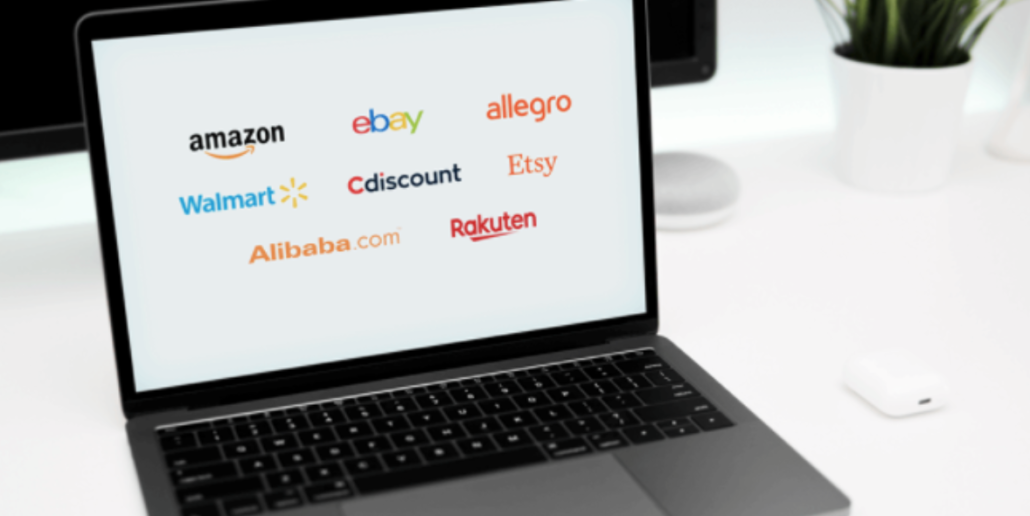If you’re an online store owner and you don’t sell on multiple channels, ask yourself 2 questions.
- Are you reaching your full sales potential with your current sales figures?
- Do you see international opportunities in your google analytics but don’t have the resources to invest in a new language/marketing plan to attack this market?
To have complementary (or emergency) sales channels, you could potentially sell on marketplaces. Not only can you choose bigger ones like eBay or Amazon (with unrivalled reach but also high competition), but also smaller and niche platforms. This article will help you decide why selling on marketplaces could benefit your online store for international growth. We’ll discuss the steps to take before starting up and their advantages and potential disadvantages.
In our previous article about marketplaces, we’ve already summarized the why or why not you should be present on marketplaces for your business or products.
In today’s article, we sum up the “why” steps to take before selling on a marketplace and the advantages and disadvantages.
Why?
If you’re a successful online seller already, you may wonder whether to diversify your sales channels and sell on marketplaces to expand your brand.
According to Shopify, organizations that sell on websites, marketplaces, social, mobile, and/or physical locations generate 190% more revenue and increased brand awareness than merchants who only sell through a single channel.
Worldwide, more than 58% of e-commerce sales were made through online marketplaces in 2019. That number is forecasted to grow by 66% within 5 years (Digital Commerce).
Above all, the number of shoppers who can find you is way higher than the number of shoppers who would come across your standalone online store. The reality is that consumers are flocking to marketplaces like eBay, Amazon; Walmart or Alibaba to do their shopping.
Steps to take:
- Do your market research
Rather than selling to the whole world, you need to concentrate on the markets where your product is likely to do well. That means carefully investigating target markets and the likely demand for your product. That might mean doing business through a marketplace that has especially good reach in your chosen territory, such as fnac.com in France. Or it might mean tailoring your offer for the market in question. For example, listing in the local language on the eBay or Amazon sites of a particular country. Check your google analytics first and investigate the market where you want to sell first, before starting up an additional sales channel. If you see a potential good market, check the marketplaces for your industry in that country.
- Invest in a streamlined back-office and product feed tool like Channable
Invest in a tool like “Channable” or “Channelengine” in order to streamline your products directly to a variety of marketplaces. This is a life-hack! Why Channable? Save time and money by automating manual work. Automatically sync your products across many platforms, manage your orders from one place, track product performance, and create automated and relevant text ads based on your product data.
- Prepare for cultural differences
Don’t be surprised by cultural differences, especially in certain European markets, is that customers there are much less shy about complaining. You’ll need robust customer service processes to ensure such problems don’t get out of hand. However, many hurdles can be overcome by automated tools. These are sometimes offered by the marketplaces themselves.
- Start small but seize the opportunity
If in doubt, start slowly. Target one particular overseas market, or only open up certain product categories for international sale. That way you can identify and iron out problems that are specific to your business without being overwhelmed by them. However, you do it, seize the opportunity. Just as marketplaces have enabled the smallest business to have a successful web presence, so they can help you compete overseas. The world really can be in the palm of your hand.
Benefits of selling on marketplaces
Some of the most important benefits of selling directly via marketplaces:
- Quick access to vast numbers of potential customers. You can break out of your niche and sell to people who may otherwise never have known you.
- Streamlined processes and protections against the risk of unpaid bills, fraud and disputes.
- Lower costs and/or the possibility to optimize your acquisition costs.
- Benefits from the marketing power of the marketplace: its visibility on search engines, its audience, reputation and brand-building expenses.
- Reputation: people trust established marketplaces so you’ll automatically gain an instant level of trust.
- Customer loyalty: marketplaces tend to draw the same customers back over and over, especially in the case of subscription services, e.g. Amazon Prime or Allegro Smart. Customer loyalty is also motivated by convenience: thanks to marketplaces, shoppers don’t have to sign up to multiple sites with their personal information.
- The possibility to use storage and delivery services offered by some marketplaces, e.g. FBA by Amazon that handles inventory storage and fulfilment.
- Cross-selling opportunities, e.g. on some platforms once a product is added to the basket, complementary products are recommended, which can result in customers purchasing more from you.
- The possibility to study your audience and leverage extensive shopping data, e.g. with Bol advertisement or Amazon advertisement
- The possibility to sell internationally so you can expand your reach with minimal effort to other countries.
Potential disadvantages and risks:
- Fees: depending on the marketplace, commissions for products sold can range from 5 to 20%.
- Work: if you want to make this a success you should be aware of the amount of work you need to put into your marketplace follow-up,…
- Competition and the risk of price wars (this shouldn’t be a big problem in the case of unique or niche items)
- A risk of getting suspended or banned from the platform, e.g. when customers are unhappy and/or their concerns are not responded to on time. For example, if you promise your customers next day delivery and you aren’t capable of fulfilling their expectations, your brand will be banned for a certain period of time.
- Giving up control over your clients’ data, which can make it more difficult for you to launch retargeting or subscription strategies.
This post is also available in: Dutch




